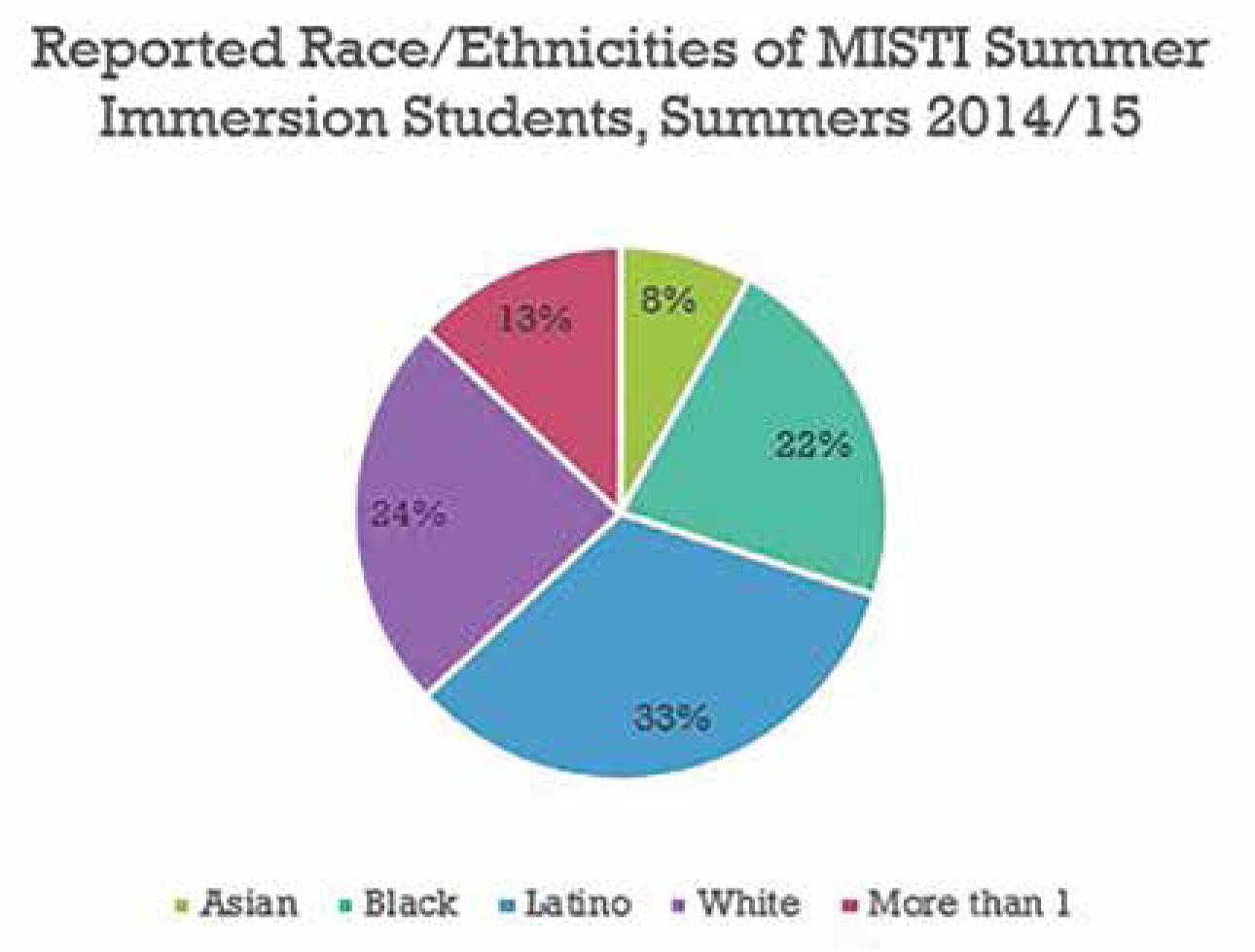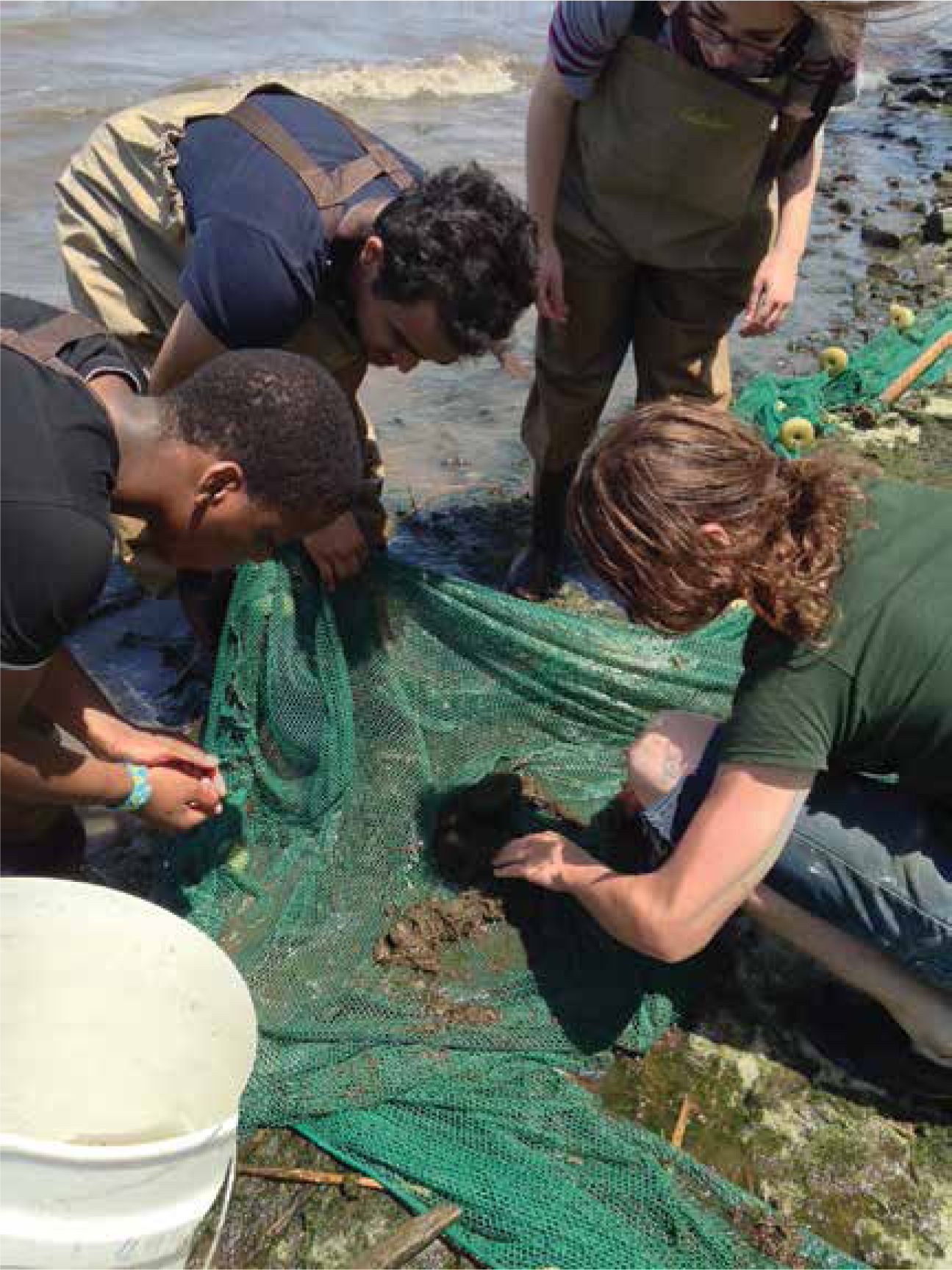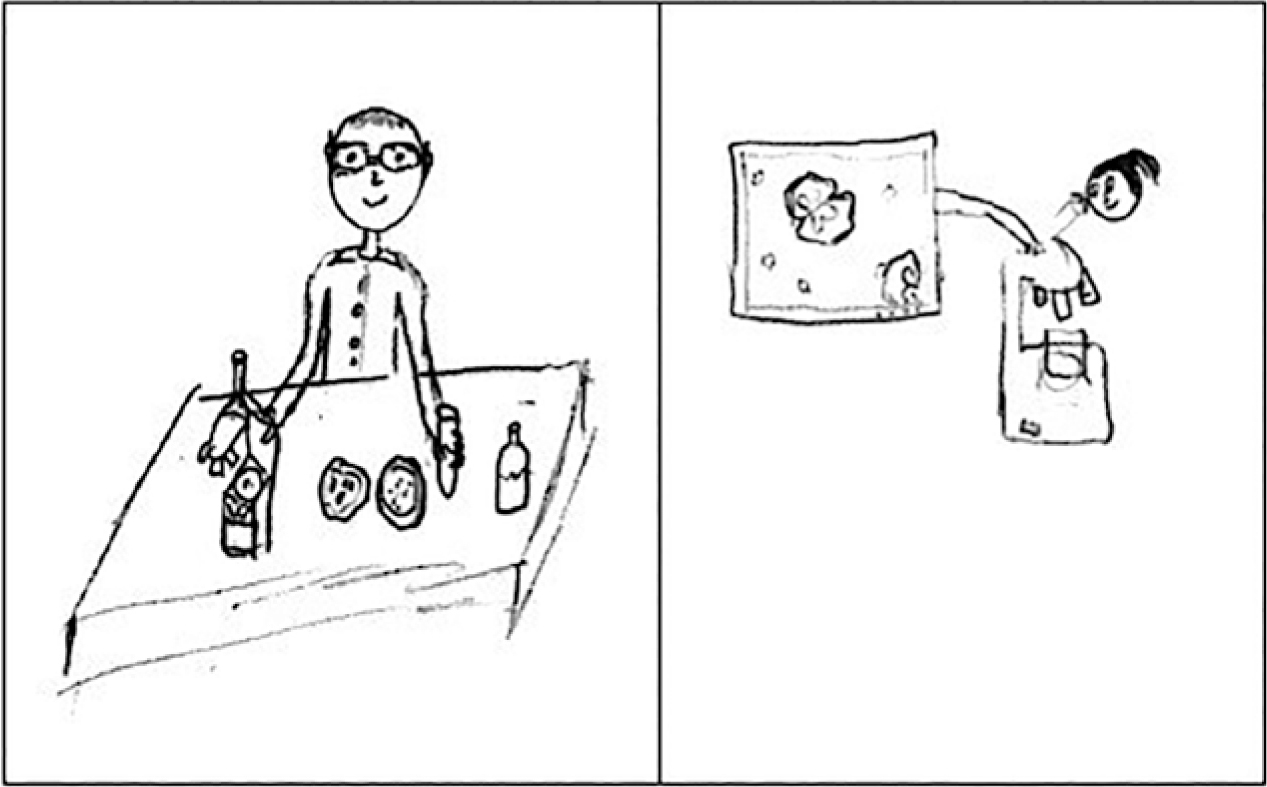Engineering Encounters
Cookie Jar Alarms
Early Childhood Engineering With Robotics
Science and Children—October 2019 (Volume 57, Issue 3)
By Kimberly Lott, Sara Urbanek-Carney, and April Mitchell

This column describes creating a classroom culture for engineering.
There is a nationwide call for broadening participation in the science, technology, engineering, and mathematics (STEM) fields, and increasing the numbers of women and minorities prepared for skilled careers (President’s Council of Advisors on Science and Technology, 2012). White males continue to dominate careers in these fields, and women and minorities are less likely to complete undergraduate and graduate degrees (Myers & Pavel, 2011). Therefore, students from underrepresented groups, including women and those from minority groups, represent an untapped talent pool of future scientists, engineers, mathematicians, and STEM educators. A longitudinal analysis of varied interventions with underrepresented undergraduates identified several key strategies to enhance performance and success of these students, including engaging them in undergraduate research and improving their scientific self-identity (Hernandez, Schultz, Estrada, Woodcock, & Chance, 2013). This article describes a successful beginner-level summer undergraduate research program, including key results that indicate changes in students’ ideas about science research.
The program and participants
The Mercy College Intensive STEM Teacher Initiative (MISTI) is sponsored by the National Science Foundation’s Robert Noyce Teacher Scholarship Program. The overall goal of MISTI is to recruit talented math and science majors to complete a 5-year BS/MS program and become math and science teachers in high-need K–12 schools. As a federally designated Minority Serving Institution, Mercy College seeks, in particular, to recruit students typically underrepresented in the STEM fields (i.e., women and minorities) to become teachers. MISTI has several components, but one strategy for recruiting MISTI Scholars to study to become teachers is engaging them in a summer research program. As noted in Figure 1, over two summers, only 13% of students identified as White, with 87% from minority groups. Fifty-eight percent of students were women. There were several goals of the summer camp, including (a) increasing students’ confidence as STEM researchers and (b) increasing students’ appreciation for reform-based teaching practices.

The MISTI STEM Summer Immersion Camp was held in summer 2014 and 2015. This 3-week program was designed and led by three professors from Mercy College and one from Bronx Community College. The program was open to Mercy College students and those from three surrounding community colleges in their first or second year of studies in a STEM field. Students were recruited in several ways from all four colleges, including by e-mails sent to STEM majors, by flyers posted in STEM department hallways and distributed, and through visits by the instructors to classes and club meetings to tell students about the program. In addition to gaining valuable research experience, students were compensated with a stipend and daily lunch. To apply, students completed an application, which included submitting a transcript and an essay describing what they hoped they would gain from the experience, their specific interests in the STEM fields, and the unique skills that they would bring to the camp. Members of the instructor team ranked the applications and accepted 30 students per summer.
There were several reasons that we chose to involve students in undergraduate research. One was that the main goal of MISTI, of which the summer program was a part, was to recruit talented undergraduates in the STEM subjects to become classroom teachers in high-need schools. Although the effectiveness of in-service teacher research experiences on classroom practice has not been completely established, studies support the importance of teachers’ previous STEM research experience, as prior inquiry experience leads to more effective inquiry-based teaching (Blanchard, Southerland, & Granger, 2008; Eick & Reed, 2002). Thus, for those participants who continued on to become MISTI Scholars, the summer program could be an important experience on which to draw once they are in the classroom. In addition, participating in undergraduate research experiences has been shown to increase underrepresented students’ likelihood of continuing to graduate school (Eagan, Hurtado, Garcia, Herrera, & Garibay, 2010). We hoped that this research camp would be a formative academic experience for these students, and it would support them all in persisting toward graduate studies, whether in STEM education, science or math, or applied fields such as health care. Several of the summer participants have enrolled as MISTI Scholars and are currently pursuing their state teaching certification. We will continue to follow all of the participating students to learn about how the beginning research camp affected their persistence to pursue graduate study and whether they continued to pursue research opportunities.
The camp
Mercy College sits near the Hudson River, a major waterway in New York State. The river flows 315 miles from its source high in the mountains, down to the Battery, the southern tip of Manhattan. The Hudson has an interesting geologic history, as its valley was carved during the last Ice Age, resulting in a characteristic “U-shaped” valley indicative of glacial formation. Water filled the valley, and the riverbed’s erosional patterns extend onto the continental shelf south of New York City, as the mysterious Hudson Canyon, home to myriad deep-water organisms. The lower 150 miles or so of the river is actually an estuary, at the mercy of the ocean’s tides and housing brackish water and myriad organisms. In more recent history, the Hudson River has been marred by human impacts.
We intentionally designed the camp to engage students in authentic research, through collaborative laboratory and field-based projects, and to model effective strategies for the K–12 classroom, with the hopes that some of the participants would consider a career in STEM education, but also to ensure that all aspects of the research process were appropriately modeled and scaffolded for students who were new to scientific research. For instance, as leaders of the camps, the professors used high-yield teaching strategies (Marzano, Pickering, & Pollock, 2001), such as cooperative learning, nonlinguistic representations, and setting objectives and providing feedback. For the first two weeks of camp, we constantly placed students into different cooperative groups, setting them up to work on new problems and practice skills (e.g., using SPSS to analyze data collaboratively). Students were frequently asked to draw their ideas, graph data, or interpret visualizations. We clearly stated our learning objectives for different sessions and provided students with feedback on each aspect of their projects, from their original project plan to the final presentations.
After introductions, icebreakers, and setting expectations, the camp began with an overview of the Hudson River itself, and with a workshop on studying estuarine ecology using river data. Students were introduced to the Hudson River Environmental Conditions Observing System (HRECOS). This observing system is a monitoring network in which more than a dozen observation stations continuously collect hydrologic and meteorological data, including air and water temperature, salinity, dissolved oxygen, and wind speed. These data are then publicly available online, providing a perfect data set for undergraduates to analyze. Students learned to use SPSS to perform simple statistical functions, like graphing and comparing data from two different sites using T-tests. They also practiced doing calculations, such as averaging and plotting simple graphs by hand to better interpret data.
In addition to analyzing HRECOS data, students got hands-on experience in collecting their own measurements. In both the laboratory and in the field, they practiced using a variety of instruments, including pH meters, dissolved oxygen probes, turbidity tubes, and hydrometers. At two field sites (up river and near the college, representing more fresh and more salty portions of the river), students got wet as they seined for fish and invertebrates, cored sediments in salt marsh mud, skimmed for plankton, and calculated current speeds (Figure 2).

Back at the college, students participated in workshops on accessing and understanding scientific literature, examining fish population data with respect to salinity, and studying plankton. Guest speakers from local scientific institutions, including the NASA Goddard Institute for Space Studies and the Lamont Doherty Earth Observatory, spoke about their research and career paths, and we introduced students to lesson planning and teaching techniques, asking students to consider using them in their own final presentations. All of these activities prepared students for their ultimate goal: working in a small group to perform a scientific study.
By the middle of Week 2, students had chosen their teams (of 3–5) and began writing a project plan. They presented their plans to the full group and got feedback from professors and peers on how to maximize their studies. Most of the third and final week was dedicated to group work—including conducting literature reviews, performing experiments in the laboratories, or crunching numbers on computers. The professors and two teaching assistants were always on hand to support teams, constantly checking in to ensure that students were on task and making adequate progress on such a tight schedule. The student teams chose very diverse study questions and methods of data collection and analysis. Some investigations were experimental, others comparative, and still others observational. For instance, one group studied the effects on acidic conditions on benthic macroinvertebrates that they collected from one of the field sites, and another experimented with the tolerance of algae to changes in salinity. Another team cultured bacteria from three different sites along the river and discovered pathogenic strains. Several teams examined plankton communities at diverse river sites, while some students studied fish data put forth by the New York State Department of Environmental Conservation.
The diverse HRECOS data sets also served as the basis for many projects. Student teams were able to ask questions investigable by reviewing archived data. For instance, one team examined the effects of Hurricanes Irene and Sandy on hydrologic data, including salinity and water levels. Another group studied correlations in different parameters— for example, salinity, temperature, nutrient availability, and dissolved oxygen—looking for effects of pollutants in the local watershed. A few teams also made connections between the HRECOS observations and data they collected themselves. For example, a team compared the plankton samples collected from two sites and also considered plankton abundance, salinity, and dissolved oxygen.
The final step was for students to present the findings from their studies, through short research papers and presentations. The group presentations took place during the final day and a half of the camp. Because one of our goals was to attract these bright young students to a career in teaching, the culminating presentation was not a traditional scientific talk, but rather a “lesson” meant to educate the group about the specifics of their research. We gave students clear guidelines on what to include in their lesson plan and lesson presentation, including learning objectivities, engagement of audience, key questions, and assessments. The teams first created a lesson plan in which they outlined the lesson components. Then they engaged the rest of the participants, including other students, teaching assistants, and professors, in a 30–40 minute lesson. We observed that the teams used several teaching strategies that we had modeled for them, such as using warm-up activities, questioning techniques, and engaging the audience in tasks such as graphing data and working in collaborative groups.
Outcomes
We used several qualitative and quantitative measures to assess the impact of the program on students and are continuing to follow the students in the hopes of better understanding how, if at all, the summer research experience affected their educational and career trajectories. We analyzed the external evaluator’s field notes, student presentations, end-of-camp questionnaires, follow-up questionnaires (6 or 18 months following the camp experience), and pre/post Draw-A-Scientist Tests (DAST; Finson, Beaver, & Cramond, 1995). Analysis of the qualitative data (e.g., questionnaire results and field notes) resulted in several emergent themes in students’ perspectives related to science and research. Specifically, they began to understand that scientific research can take place in both the laboratory and the field and that it can be a lot of fun. Students also noted that they began to feel more interested in research, both as an experience and as a potential career. Another theme that emerged was that students began to feel more confident in their abilities as researchers and public speakers. Qualitative exemplars that support these themes are summarized in Table 1.
| Emergent themes from qualitative analysis of the Draw-A-Scientist Test responses. | ||||||
|---|---|---|---|---|---|---|
|
The pre/post camp administration of the DAST also revealed changes in some students’ perceptions. DAST is an instrument that allows education researchers to uncover students’ mental models of scientists and scientific practices by asking them to draw a picture of a scientist doing science and describe what they are doing. According to Norman (2014), “Mental models are what people really have in their heads, and what guides their use of things” (p. 12). Mental models in turn can affect problem solving and behavior (Gentner & Stevens, 2014; Johnson-Laird, 2001). Understanding individuals’ mental models can help predict and explain behavior (Norman, 2014). The DAST responses were coded using the DAST-C rubric (Finson et al., 1995) and also qualitatively, allowing themes to emerge. Of the 29 participants in the 2015 camp, 72% exhibited marked changes in their responses (Figure 3). These changes included: • Location of the scientist from the laboratory (pre) to a field site (post) • Disposition of scientist looking unsure and unkempt (pre) to calm and organized (post) • Gender from male (pre) to female (post) • Indication of scientist as other (pre) to self (post)

In addition to the drawings, students were asked to provide some text describing what they drew, and these changes were confirmed in their writing.
The results previously described suggest that the participating students changed their perspectives about research and about themselves as researchers. That is, there is evidence in the shift of their mental models of what scientists and scientific research look like, which is especially important for students who have not had research experiences and who come from diverse backgrounds. As noted earlier, for underrepresented students, engagement in undergraduate research and growth in science self-identity lead to greater academic success (Hernandez et al., 2013). Through the MISTI summer program, students were engaged in diverse experiences, that is, laboratory and field research, hands-on and computer-based workshops, guest speakers, and original research, as well as with high-impact teaching practices, resulting in an effective and useful experience, which we hope will support the students’ persistence and achievement in STEM degrees and careers. We plan to continue to follow these students and learn if these changes in how they viewed themselves persisted and whether they continued to graduate school at higher rates than their peers who did not participate in undergraduate research programs.
Conclusion
Undergraduate research is considered to be a high-impact teaching practice (Kuh, 2008), contributing to student success. Providing students with an early, low-stakes, and fun experience with scientific research may help students better understand the practice of science and see themselves as capable scientists. Teaching practices such as modeling and scaffolding all aspects of the research process may support students’ changing perspectives of scientific practices and their own capability as researchers.


